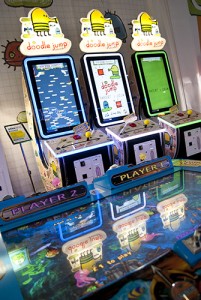InterGame explores the importance of cabinet design and after-sales maintenance.


Game content may well be the core of a product, but its appearance is often what attracts players. Today, cabinets are designed to not only house a game but provide an element of interaction and - increasingly - comfort for the player. Maintaining the performance of a cabinet is also of the utmost importance to operators. Machine down time is, after all, time spent not making money. Here, InterGame takes a look at the design process as well as the spares and after-sales service offered by market-leading companies.
Cabinet design
If the recent IAAPA and EAG trade shows highlighted anything, it was the sheer breadth and variety of amusement game design. It also demonstrated the influence of consumer electronics technologies in some areas, yet the exact opposite in others, where more traditional, mechanical games remain a staple of a location’s offering.
“Fashions come and go in all types of product design and game cabinets are no different,” said Steven Tan of Universal Space. “Currently, designs are ranging from the massive deluxe machines that act as centrepieces in larger FECs, arcades and casinos, down to the very tiny children’s vending, miniature versions of standard machines. Although technology allows us to produce smaller, more compact machines, that is not always what the operators and public want.”
Sega’s Justin Burke suggested that away from traditional driving and shooting games, some redemption pieces, such as Doodle Jump, which is based on the popular smartphone app, are beginning to follow the example of iPad-generation consumer electronics.
“Games like Doodle Jump are striking in their simplicity,” he said. “They’re working on that ‘less is more’ look seen in today’s touchscreen technology devices. That sort of thing is a different approach for redemption games. There’s still a lot of variety across the board.”
Evidently inspiration can be taken from just about everywhere but the pay-to-play amusement industry has never been afraid to recycle and make use of older, more traditional concepts. Touchscreens maybe increasingly finding their way into cabinet design, but many of the best performing games are based on a mechanical concept.
Read the full article in the March issue of InterGame.

